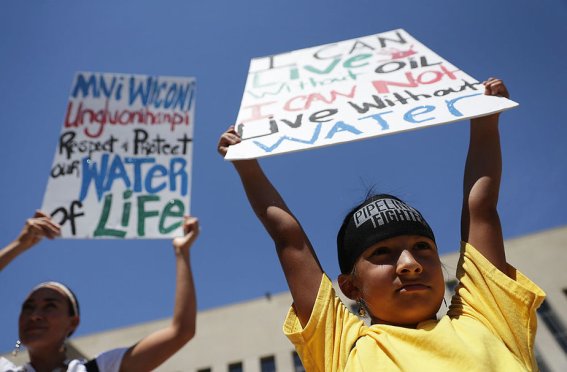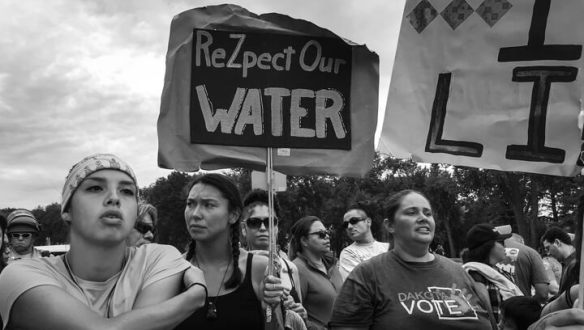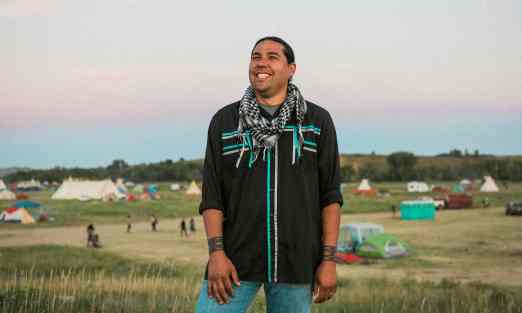by Mike Bryson
Native Americans and First Nations people are leading the cause for climate justice in North America, and the new front line of this environmental activism is in Cannon Ball, ND. On the edge of the Standing Rock Sioux reservation, over 1,300 Native Americans from dozens of tribes are camped out to peacefully protest the construction of the Dakota Access Pipeline, which would cross the Missouri River near its confluence with the Cannon Ball River, just north of reservation land.

WASHINGTON, DC – AUGUST 24: Seven-year-old Omaka Nawicakinciji (R) of the Oglala Lakota Nation in South Dakota participates with his mother Heather Mendoza (L) during a rally on Dakota Access Pipeline August 24, 2016 outside U.S. District Court in Washington, DC. (Photo by Alex Wong/Getty Images; caption by Inside Climate News)
Protestors justly object that the pipeline poses a significant threat to the waters of the Missouri River (which supply drinking water to the Reservation as well as many communities and cities downstream) and associated tributaries and wetlands; traverses/disturbs historically significant lands adjacent to the reservation; and has been fast-tracked in an approval procedure by the US Army Corps of Engineers that did not include proper and thorough environmental (justice) impact assessments or adequate consultation with tribes (a claim supported by the US EPA and other federal agencies).

Photo by Sarah LittleRedFeather, published by the LA Progressive in the essay, “What Would Sitting Bull Do?” by Winona LaDuke, 25 Aug 2016
Activists are shaping a (re)visionary North American narrative about fossil fuels and climate change through peaceful protests, cross-country journeys, art, storytelling, direct political action, and powerful legal challenges to fossil fuel infrastructure expansion. Their actions have galvanized widespread and diverse support from ordinary citizens and celebrities, from the Black Lives Matter movement to the United Nations — even as most major media outlets have provided minimal coverage of the months-long protest (especially when compared to the flood of publicity and news coverage about the Keystone XL Pipeline project, which crossed an international border, and last winter’s illegal and absurd occupation of a National Wildlife Refuge in Oregon by disgruntled white ranchers).
Because of sporadic mainstream media coverage (at best), their stories need to be shared via social media and alt news with all Americans, who stand to benefit from their actions and activism. This especially applies to citizens here in Illinois, by far the most populous state through which the so-called Dakota Access Pipeline has its planned route by Dallas TX-based Energy Transfer (the line is projected to terminate in the downstate community of Patoka IL, 75 miles east of St. Louis in Marion County).
Selected sources of news about the ongoing Standing Rock protest include Twitter (#DakotaAccessPipline, #NoDAPL, and @SacredStoneCamp) and Facebook (Dallas Goldtooth and Indigenous Environmental Network, for example), Democracy Now!, Inside Climate News, Indian Country Today, The Guardian, and the Desmog blog.

Dallas Goldtooth, currently from Chicago but originally from MN and SD, is with the Indigenous Environmental Network and is a #ClimateJustice activist now based at the Standing Rock Camp in Cannon Ball, ND. (photo: Josué Rivas, The Guardian)
Mike Bryson is Professor & Director of the Sustainability Studies Program at Roosevelt University in Chicago IL.

